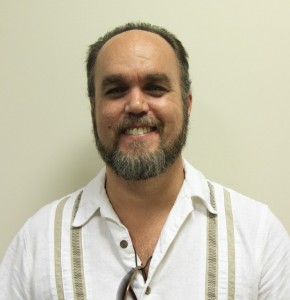 Several times during my incarceration I was housed at prisons under threat of closure. As in any work place that is in danger of being shut down there was a great deal of fear on the part of staff. Often prisons are located in areas that do not have many other local jobs. Employees face not just loss of their jobs, but also forced relocation to other parts of the state. Each time this happened the genesis of the issue was a proposed budget cut to the state agency. Employee morale and professionalism were usually eroded, and there was a concurrent rise in stress and danger for the inmates.
Several times during my incarceration I was housed at prisons under threat of closure. As in any work place that is in danger of being shut down there was a great deal of fear on the part of staff. Often prisons are located in areas that do not have many other local jobs. Employees face not just loss of their jobs, but also forced relocation to other parts of the state. Each time this happened the genesis of the issue was a proposed budget cut to the state agency. Employee morale and professionalism were usually eroded, and there was a concurrent rise in stress and danger for the inmates.
The option of closing juvenile detention facilities is increasingly being put forth as a solution for increasing efficiency and helping rein in budgets. Today, when times are tough all over, there is a tension between the government’s desire to cut costs, employees need to work, politicians mixed obligations to effective governance and their constituencies, and what is best for the kids and adults in these prisons. The answers are seldom simple.
As recently reported in JJIE, California Gov. Jerry Brown’s plan to close the three remaining state run juvenile facilities has begun to be met with some strong opposition from several camps. Counties are afraid of taking on another financial burden, prosecutors claim that public safety is jeopardized (and threaten to try more kids as adults) and correctional officers cry out that this is a disservice to kids. Most advocates for reform favor the closures, and many see it as trend setting for the rest of the country. There are legitimate worries about some counties’ ability to meet standards of care, and there is the problem of mixing serious violent offenders with other kids.
Other states are grappling with similar issues, though none have gone as far as Brown’s proposal of complete elimination of the prisons. In Illinois, Gov. Pat Quinn has proposed to close two youth prisons. As reported by WBEZ, opposition to the closures is strong amongst correctional officers and local leaders in the affected communities. The governor’s office estimates that there would be 91 layoffs in Murphysboro and over 200 in Joliet.
Those in favor of reform celebrate the proposal. The state’s Department of Juvenile Justice has 1,700 beds available, but 700 of those are unfilled. The DJJ plans to use extra funds generated by the closures to train special parole officers to oversee young parolees. To many in favor of the proposal it makes sense financially, but others have their doubts. Republican state Rep. Mike Bost, who represents the Murphysboro area, has questioned the logic of closing down the relatively new facility located in his region. It was built in 1997. He points out that besides Southern Illinois University and “facilities like this,” there are few sources of work in his part of the state.
In Tennessee, the Republican governor has come under attack for suggesting that the Taft Youth Center, north of Pikesville, be closed. As reported in the Times Free Press, Gov. Bill Haslam has made low cost and efficient government services a priority. Children’s Services Commissioner Kathryn O’Day faced the ire of lawmakers on the Government Operations Committee, both Democratic and Republican. With many employees from Taft in attendance, committee members questioned the accuracy of O’Day’s criteria for selecting Taft. It is the oldest of the state’s youth prisons, and according to the Commissioner the state would save $4.4 million annually. Critics contend that O’Day’s figures for renovation of the facility are incorrect as well.
Another concern echoed questions raised by critics ofCalifornia’s plan. They are worried that the older and more violent youth housed at Taft, many purported to be gang members, would negatively impact younger kids at other facilities. O’Day stated that these youth would be housed separately. Additionally, the commissioner was accused of not taking into account the loss of jobs and its impact to the area. She countered that the Department of Corrections was scheduled to open a new prison in the area in 2013, and that most of the employees of theTaftYouthCenterwould be able to find jobs there.
From New York to Mississippi to Utah these issues are being debated. The decisions of state governments will impact a lot of people, including prison employees and their families. Ultimately though, the No. 1 consideration is how the kids are affected. If a facility is providing needed services and can be run effectively then it should stay open. If closing these facilities leads to a better chance for kids to live productive and crime free lives then it is worth the cost in jobs.
The days of building prisons in order to provide jobs are hopefully numbered. Economic development that isn’t based on perpetuating human suffering can now come to the fore.
